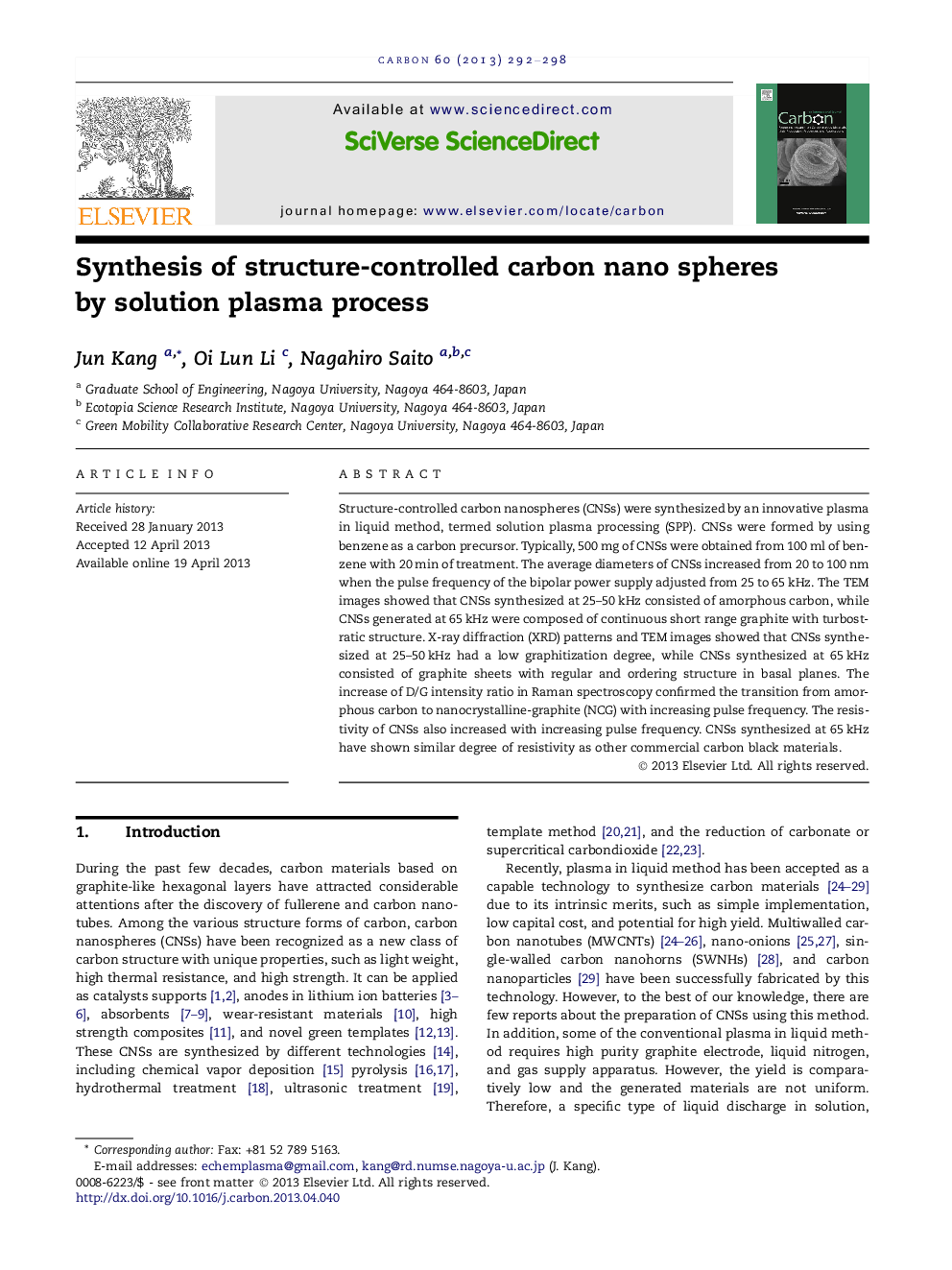| Article ID | Journal | Published Year | Pages | File Type |
|---|---|---|---|---|
| 1414175 | Carbon | 2013 | 7 Pages |
Structure-controlled carbon nanospheres (CNSs) were synthesized by an innovative plasma in liquid method, termed solution plasma processing (SPP). CNSs were formed by using benzene as a carbon precursor. Typically, 500 mg of CNSs were obtained from 100 ml of benzene with 20 min of treatment. The average diameters of CNSs increased from 20 to 100 nm when the pulse frequency of the bipolar power supply adjusted from 25 to 65 kHz. The TEM images showed that CNSs synthesized at 25–50 kHz consisted of amorphous carbon, while CNSs generated at 65 kHz were composed of continuous short range graphite with turbostratic structure. X-ray diffraction (XRD) patterns and TEM images showed that CNSs synthesized at 25–50 kHz had a low graphitization degree, while CNSs synthesized at 65 kHz consisted of graphite sheets with regular and ordering structure in basal planes. The increase of D/G intensity ratio in Raman spectroscopy confirmed the transition from amorphous carbon to nanocrystalline-graphite (NCG) with increasing pulse frequency. The resistivity of CNSs also increased with increasing pulse frequency. CNSs synthesized at 65 kHz have shown similar degree of resistivity as other commercial carbon black materials.
